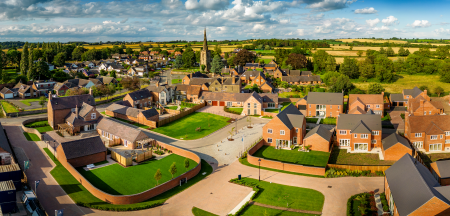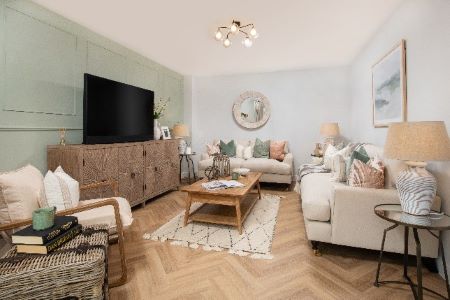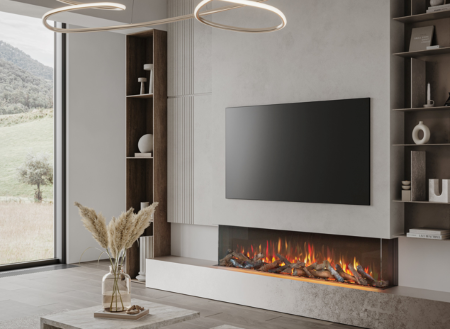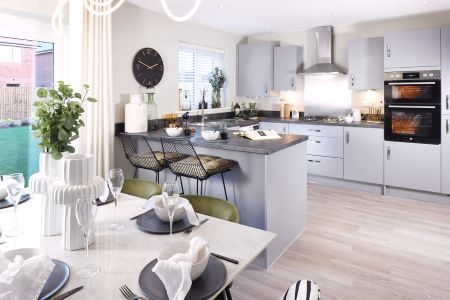Background
When architect, Lucy Marston, bought Long Farm in Reydon, near the Suffolk coast, in 2008, little did she know that five years later the property would win Grand Designs’ Home of the Year 2013 – and specifically for its ‘sustainable building features’, including its Daikin Altherma Low Temperature (LT) Split heat pump.
The original plan was to renovate the farmhouse to bring it up to modern standards. However, Marston wanted it to be sustainable, with high levels of energy efficiency, but because of the property’s age and the fact that Reydon is in an off gas area, this presented a challenge when choosing a heating system that did not run on fossil fuels.
As a result, Marston decided the best option would be to demolish the farmhouse and build a new home in its place, giving her more choices for energy consumption and management. Marston brought in Essex-based underfloor heating and renewables installer Terra Therma which specified a Daikin Altherma LT Split heat pump, combined with underfloor heating and high levels of thermal insulation.
The Solution
A Daikin Altherma 16kW LT Split heat pump system comprises a wall-hung indoor unit connected to an outdoor unit. In this project, the ERHQ-B series outdoor unit was installed. The system is completed with a 300 litre hot water cylinder.
“It is a very exposed location; we had to make sure that the unit chosen was suitable for sea air – the house is literally on a cliff top – so the wind can be quite strong there,” says Mark O’Brien, Director at Terra Therma.
“We specified the Daikin Altherma heat pump that would suit the project, from an underfloor heating as well as from a heat source point of view. It wasn’t a difficult choice ─ we use Daikin products pretty much all of the time anyway, we are familiar with the product and know that the warranties are good – and the support is brilliant from the Daikin technical team.”
The Daikin Altherma LT Split range is ideal for new build properties with high levels of insulation and can be integrated with underfloor heating, heat pump convectors or radiators designed to operate at low flow temperatures. These LT products are accredited under the Microgeneration Certification Scheme (MCS), making them eligible products for the forthcoming Domestic RHI.
The first challenge for Terra Therma was in using the low temperature system with underfloor heating on the upper floors. “There wasn’t a problem with the concrete ground floor,” O’Brien explains, “But the upper floors are made of timber. Normally the emitter is placed between joists with a structural deck over the top, followed by a floor covering, but a heat pump has to work really hard to get through the structural section and the floor finish. Instead, we put the structural floor in and the pipework above, so all the heat pump has to overcome is the resistance of the flooring, which means a much lower flow temperature is needed.”
In the case of Long Farm, however, there was another conundrum to be solved, O’Brien explains. “The system needed to be operated remotely for when the Marston family are away for extended periods. The only other option would have been to let the system ‘tick over’ 24/7 and then increase the heating output when the family were staying in the house.”
Terra Therma developed a solution that allows Marston to access the system via an internet connection from her London office, giving her control of the heating from a smart phone or tablet computer.
The energy savings compared with fossil fuel systems are considerable. The higher efficiency of the LT Split system means that over the course of a year, about three kilowatts of heat are produced for every kilowatt of electricity used. “Consumption is reduced dramatically. Compared with an oil fired system, energy consumption is probably reduced by up to a half. It’s a very sustainable system,” O’Brien explains.
The property has a total floor area of 417m2 and heat loss for the building was calculated as 11.7kW. The underfloor heating system was designed with a flow temperature of 37˚C. Simulated annual running costs for a Daikin Altherma heat pump, plus all the household electricity costs, have been estimated at around £1500, showing significant savings when compared to the combined costs of oil and electricity.
The solution is also extremely discreet. “The indoor unit is hidden in the loft void – there’s nothing to see except the occasional sensors for the room thermostats. The outdoor unit is screened from the patio where the family tends to spend a lot of its time,” O’Brien says.
“I’m very happy with the system,” says Marston. “Its simplicity, its controllability and its energy efficiency ─ and the fact that we are only heating rooms we actually use ─ make it a highly effective system for me.”
Conclusion
The installation of the Daikin Altherma LT air-to-water heat pump in conjunction with underfloor heating at Long Farm has provided an efficient heating system while being a cost effective renewable energy alternative to traditional systems in an off gas area. The solution was so successful that Terra Therma has been asked to quote for further work installing Daikin heat pumps in Reydon.





